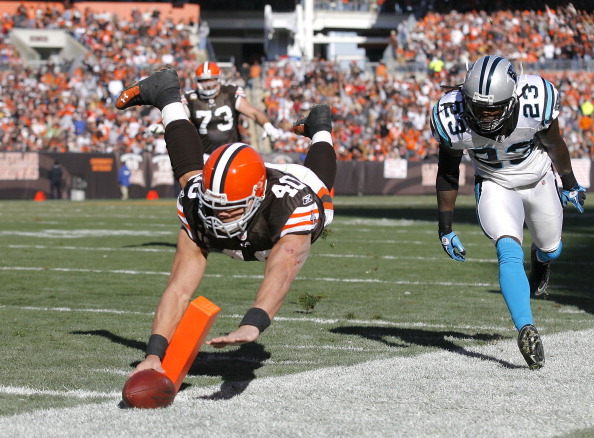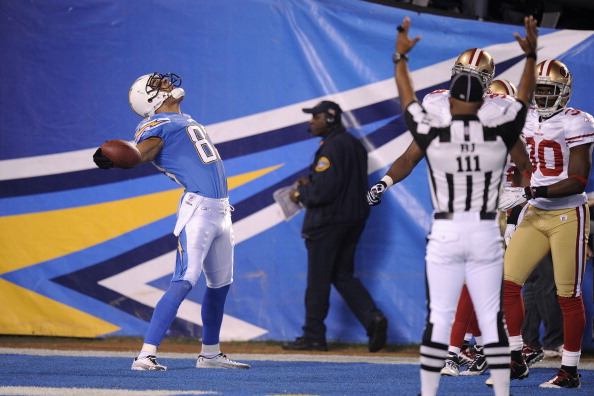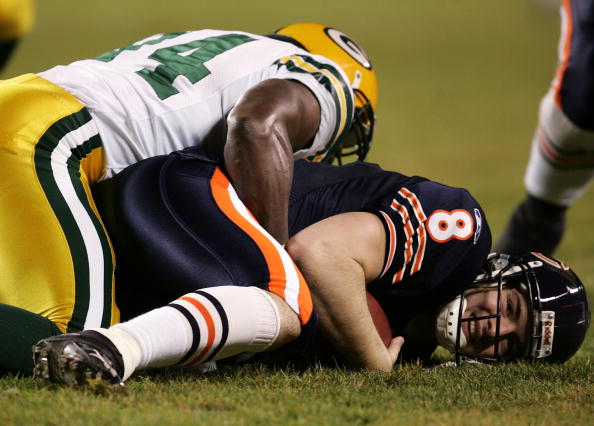Fantasy Football Week 17: What Have We Learned?
By Jesse Carrajat
» More Columns
"There are no regrets, only lessons learned." What an invaluable saying to live by. Although the motto itself is much easier said than done, it's too late, I already said it.
Now, at the near conclusion of another year of NFL action, it's imperative that we all ask ourselves this one question: "What lesson(s) (pronounced Less-un-…tzzz) did I learn in the 2010 fantasy football season?" After 2009, I learned that reaching in the draft for prospects will killcripple a roster, and that saving add/drops for the post-season is crucial for success.
To combat this error, in this year's draft, I utilized analytics such as ADP (average draft position) to avoid over-valuing players. The result: A fantasy league championship, and my very own CBS column that allows me to purposely include unintentional typos such as the adjective: killcripple.
So, what lessons have you learned this year that will make you a better fantasy football player in 2011? What mistakes did you make, and what regrets…I mean…lessons, will you take into next season that will allow you to improve on this year's performance? The answer will vary from person to person. However, the following column will highlight some of the more common lessons learned in 2010, so that hopefully we can all enjoy a 2011 that is free of regrets…..which of course, don't exist.
Lesson I – We are all at the mercy of the Injury Fairy.
Regardless of how you spend your time prepping for fantasy football, NOTHING will save you from the random and devastating wrath of the Injury Fairy. Every coach has a horror story from an encounter with this mythical beastette.
This year, the B-word waved her dreaded wand early and often, claiming the likes of players such as TE Dallas Clark, RB Pierre Thomas, RB Ryan Grant, QB Matthew Stafford, RB Joseph Addai, RB Clinton Portis, and GE Tony Romo. As the fantasy postseason neared, she cast her doomsday spell again, this time on superstars such as QB Aaron Rodgers, RB Frank Gore, TE Antonio Gates, and WR Austin Collie. One fact is: GE stands for Goofy Eared. Another fact is: there is no way to prevent the Injury Fairy from striking; you can only hope to minimize the damage done. Do this by ensuring your roster has depth. Draft and add talented handcuffs for your fantasy studs. If available, add the handcuffs of injury prone studs not on your own roster. Reserve a roster spot for suspended or injured players that may have value in the later weeks of the season.
The bottom line is: if you are proactive when it comes to coping with injuries, you can avoid the reactive scramble that ensues when the Injury Fairy strikes, and strike she will.
Lesson II – Quarterbacks are back on top
In the end, the 2010 NFL regular season will be remembered for three things: 1. a certain ex-convict's resurrection, 2. a certain ex-pro-bowler's text-selection, and 3. a fantasy philosophy redirection.
Year-to-date, the list of the top-twenty 2010 fantasy scorers consists of the following: four RBs, four WRs, and TWELVE QBs. This year will serve as a clear indication that the immediate future of fantasy football will revolve around the quarterback, as opposed to the running back-heavy philosophies of the past.
Lesson III – A true workhorse is hard to find
If I came to you on Sunday, September 5th, and told you that by week 16 of the 2010 NFL season, the top-three fantasy running backs would be Arian Foster, LeSean McCoy, and Peyton Hillbillis, you probably would have replied with a sarcastic remark, such as, "Yea, OK, and Mike Vick will be named the starting quarterback in the Pro Bowl for the NFC." Or, you may have said something insensitive and sarcastic, such as, "Yea, alright chief, and Austin Collie will finish the season with 58 catches, 8 TDs, and 0 recollection of anything that occurred." Well, we both would have been right.
The Larry Johnson days of RBs carrying the ball 350-plus times in a season are all but over, and more and more teams are turning to two, and sometimes even three able bodied backs to get the job done. Next year, be mindful of running back platoons and the role a back plays in their own offense. Be especially careful not to over-value an inconsistent contributor.
Lesson IV – With high-risk comes high-reward
According to its definition, gambling occurs any time someone bets on an uncertain outcome. Regardless of whether or not money is officially 'wagered,' there is no doubt that fantasy football is essentially a form of gambling. As in wagering chips at a casino, or dollars in a poker tournament amongst friends, if you want to win big in fantasy football, at times, you have to risk big.
This translates into adding a "flier" to your roster. A "flier" is a player who has tremendous upside, but because of notable downside such as injury, suspension, or inexperience, they may not make an immediate impact on your roster. Although a flier takes up much needed space on a fantasy roster, the hope is that in the end, the player's productivity will justify the means.
In week 15 this year, coaches who were savvy enough to hold onto WR Vincent Jackson were awarded with a 34-point gem in the heart of the fantasy playoffs. If you were amongst the few who stashed WR Sydney Rice throughout an injury riddled season, you were given a gift-wrapped 27-point surprise in week 13. Although it doesn't always pay-off, calculated risks are the mark of a true fantasy champion.
Lesson V – Adopt a post-season strategy
A majority of fantasy football leagues start and end their playoffs between weeks 13 and 16 of the NFL season. During that span in 2010, the list of top-ten fantasy producers include players such as QBs Josh Freeman and David Garrard, as well as TE Jason Witten. This should serve as an indicator that getting to the post-season involves certain strategies, while winning in the post-season involves others.
First and foremost, be sure to enter the playoffs with some roster depth in the event of injury. As the NFL season progresses and postseason implications run deep, you should strongly consider starting players on teams whose playoff hopes are on the line. Simultaneously, you should also consider benching players who are competing for nothing but statistics and pro-bowl nods. All the while, owners should constantly be considering factors such as inclement weather and field conditions, especially for kickers and pass-oriented players.
Lesson VI – Develop an exit strategy
When the season finally winds down to a close, NFL players return to their mansions and yachts to adoring families and supportive social networks. You, on the other hand, after ceremoniously gazing at your fantasy roster for one last time, will X out your browser to face family and friends seething with resentment after four months of fantasy football fueled neglect. Do yourself, and them, a favor by planning either A) some sort of family oriented vacation far out of reach of any Apple of PC supported technology or B) some sort of A).
Funny Caption only a Football Fan would Get
This is not just a picture: it is actually the entire seventh chapter of the book "Reasons Why I am Having More Fun in Washington" By: Rex Grossman










